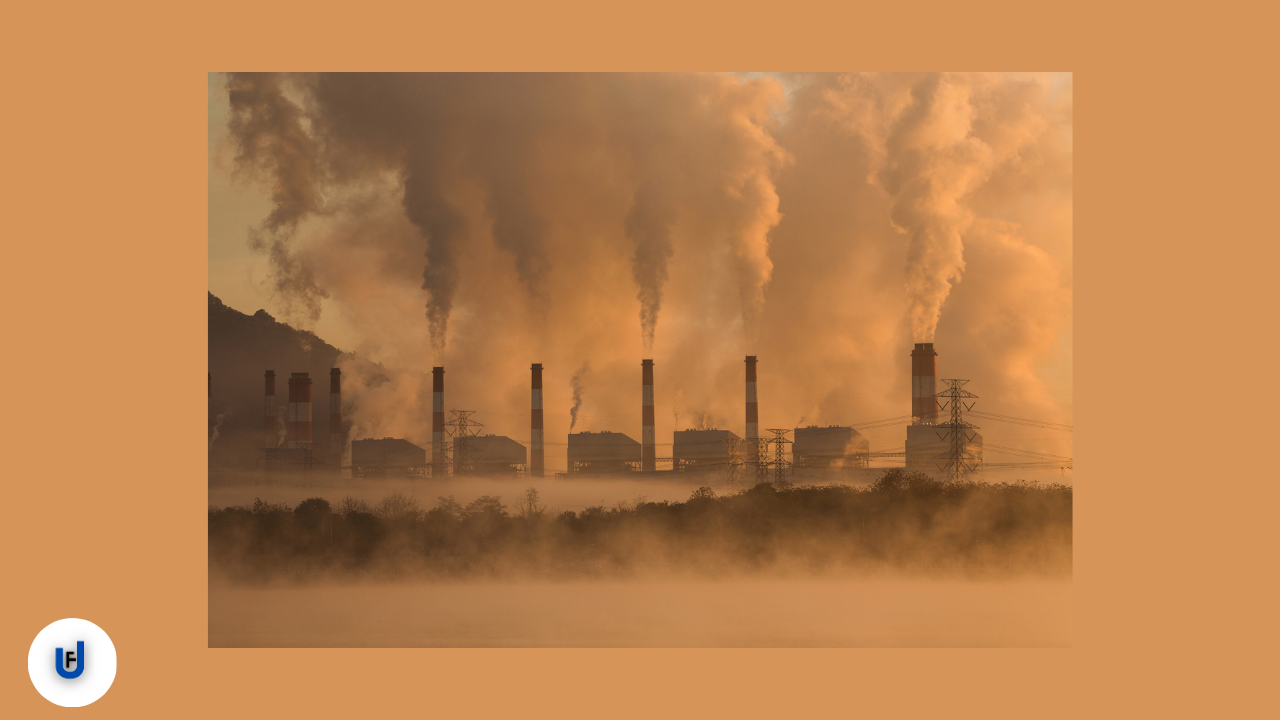
Introduction:
Smog, a mixture of “smoke” and “fog,” refers to a dense, visible air pollution often found in urban areas. It is primarily composed of pollutants such as particulate matter, nitrogen oxides, and volatile organic compounds. The adverse effects of smog on human health and the environment are substantial.
Smog poses significant respiratory risks, as inhaling particulate matter and ozone can lead to respiratory issues, exacerbate asthma, and increase the risk of cardiovascular diseases. Long-term exposure may even contribute to lung cancer. Vulnerable populations, such as children and the elderly, are particularly at risk.
Beyond health concerns, smog also has detrimental effects on the environment. Ground-level ozone, a major component of smog, harms vegetation and crops, affecting agricultural productivity. It can also lead to the acidification of water bodies, disrupting aquatic ecosystems.
The formation of smog involves complex chemical reactions. Combustion processes, such as those in vehicles and industrial facilities, release precursor pollutants. These pollutants undergo transformations in the atmosphere, particularly in the presence of sunlight, leading to the creation of smog.
Efforts to combat smog include regulatory measures, technological advancements, and public awareness campaigns. Implementation of emission standards, promotion of cleaner technologies, and the development of sustainable transportation systems are crucial steps. Additionally, community involvement in reducing individual carbon footprints can contribute to smog reduction.
Source of Smog:
The sources of smog are diverse and often linked to human activities. Here are some primary sources:
Primary Sources of smog:
1.Vehical Emissions:
Combustion engines in cars, trucks, and other vehicles release pollutants like nitrogen oxides (NOx) and volatile organic compounds (VOCs), contributing significantly to smog formation.
2. Industrial Activities:
Factories and industrial facilities emit pollutants, including particulate matter and various gases. Combustion processes and manufacturing activities release significant amounts of smog-forming substances.
3. Power Plants:
Fossil fuel power plants, especially those burning coal and oil, release sulfur dioxide (SO2) and other pollutants into the air. These emissions can contribute to the formation of sulfurous smog.
4. Agricultural Practices:
Agricultural activities, such as the use of fertilizers and pesticides, release ammonia (NH3) and other compounds that can contribute to particulate matter and ground-level ozone.
5. Chemical Solvents:
The use of solvents in various industrial processes and consumer products releases volatile organic compounds (VOCs), which are key contributors to the formation of photochemical smog.
6. Waste Disposal:
Open burning of waste, especially in areas with inadequate waste management, releases pollutants into the air. The burning of plastics and other materials contributes to smog formation.
7. Natural Sources:
Human activities are the primary contributors, natural sources such as wildfires, volcanic eruptions, and dust storms can also release particulate matter and gases that contribute to smog.
8. Geographical and Meteorological Factors:
Some geographical features, like valleys or areas with limited air circulation, can trap pollutants, leading to the accumulation of smog. Meteorological conditions, including temperature inversions, can exacerbate smog formation by trapping pollutants near the ground.
Addressing smog requires a comprehensive approach that includes regulatory measures, technological advancements, and changes in human behavior to reduce emissions from these various sources.
Formation of Smog
Smog formation involves complex chemical reactions in the atmosphere, primarily in urban areas with high levels of pollutants. The two main types of smog are “photochemical smog” and “sulfurous smog,” each with distinct formation processes:
1. Photochemical Smog:
– Precursor Pollutants:
Emissions from vehicles, industrial activities, and other combustion processes release nitrogen oxides (NOx) and volatile organic compounds (VOCs) into the atmosphere.
– Sunlight:
Intense sunlight, especially during warm weather, plays a crucial role. Sunlight initiates a series of photochemical reactions.
– Ozone Formation:
NOx and VOCs undergo reactions in the presence of sunlight, leading to the formation of ground-level ozone (O3), a key component of photochemical smog.
– Particulate Matter:
Secondary pollutants, including fine particulate matter, are formed as byproducts of these reactions. These tiny particles contribute to the visible haze associated with smog.
2. Sulfurous Smog:
– Sulfur Dioxide (SO2) Emissions:
This type of smog is associated with the burning of fossil fuels containing sulfur, such as coal and oil. Industrial processes and power plants are major sources of SO2.
– Atmospheric Conditions:
Sulfurous smog often occurs in areas with cool, damp conditions, which hinder the dispersion of pollutants.
– Chemical Reactions:
SO2 reacts with other compounds in the atmosphere, forming sulfuric acid (H2SO4) and other sulfate compounds. These reactions contribute to the characteristic visibility-reducing haze.
In both types of smog, the role of atmospheric conditions, such as temperature and wind patterns, is crucial. Stagnant air can trap pollutants near the ground, allowing them to accumulate and form smog. Geographical features, like mountains or valleys, can also influence the dispersion and accumulation of smog.
Efforts to mitigate smog involve reducing emissions of precursor pollutants through regulatory measures, promoting cleaner technologies, and raising public awareness about sustainable practices.
Effects of Smog:
Smog has several adverse effects on the environment, impacting both ecosystems and natural resources. Some key effects include:
1. Air Quality Degradation:
Smog significantly deteriorates air quality by introducing high levels of pollutants. Elevated concentrations of ozone, particulate matter, and other harmful compounds can cause respiratory problems in humans and animals.
2. Vegetation and Crop Damage:
Ground-level ozone, a major component of smog, can damage plant tissues and hinder photosynthesis. This negatively affects crop yields and forest ecosystems, leading to economic losses in agriculture and potential harm to biodiversity.
3. Water Pollution:
Smog contributes to the acidification of rain, turning it into acid rain. Acid rain can harm aquatic ecosystems by lowering the pH of water bodies, affecting fish and other aquatic organisms. This phenomenon poses a threat to both freshwater and marine environments.
4. Climate Change Impact:
Some components of smog, such as black carbon particles, can contribute to climate change by absorbing sunlight and warming the atmosphere. This influence on radiative forcing can alter weather patterns and exacerbate global warming.
5. Ecosystem Disruption:
Smog can disrupt ecosystems by affecting the interactions between species. Plants, animals, and microorganisms may experience stress or reduced reproductive success due to the presence of air pollutants.
6. Aesthetic and Recreational Impact:
Smog reduces visibility and diminishes the aesthetic quality of landscapes. It also limits outdoor recreational activities, impacting the well-being of communities and affecting tourism in affected areas.
7. Soil Contamination:
Particulate matter and pollutants from smog can settle on the ground, contaminating soil. This can alter soil composition and affect the health of plants and microorganisms crucial for soil fertility.
8. Building and Infrastructure Damage:
Acid rain resulting from smog can accelerate the deterioration of buildings and infrastructure made of materials like limestone or concrete, leading to increased maintenance costs.
Addressing smog-related environmental issues requires comprehensive measures to reduce emissions, improve air quality standards, and promote sustainable practices in various sectors. International cooperation and stringent regulations are essential to mitigate the broader environmental impacts of smog.
Solution to Smog:
Addressing smog requires a combination of regulatory measures, technological advancements, and public awareness initiatives. Here are some key solutions:
1. Emission Controls:
Implement and enforce strict emission standards for industries, vehicles, and power plants. This includes the use of catalytic converters in vehicles to reduce nitrogen oxide emissions and the installation of pollution control devices in industrial facilities.
2. Promotion of Clean Technologies:
Invest in and incentivize the development and adoption of cleaner technologies, such as electric vehicles, renewable energy sources, and energy-efficient industrial processes. This helps reduce the release of pollutants that contribute to smog formation.
3. Alternative Transportation:
Encourage the use of public transportation, cycling, and walking to reduce reliance on individual vehicles. This can decrease traffic-related emissions and alleviate congestion in urban areas.
4. Green Urban Planning:
Incorporate green spaces, parks, and trees into urban planning. Vegetation helps absorb pollutants and improves air quality. Green roofs and walls in buildings can also contribute to reducing smog.
5. Awareness and Education:
Raise public awareness about the causes and effects of smog. Educate communities on sustainable practices, such as reducing energy consumption, proper waste disposal, and the importance of using environmentally friendly products.
6. International Cooperation:
Collaborate internationally to address transboundary smog issues. Air pollution often crosses borders, necessitating coordinated efforts among countries to reduce emissions collectively.
7. Research and Monitoring:
Invest in research to better understand smog formation, identify emerging pollutants, and develop innovative solutions. Implement effective air quality monitoring systems to track pollutant levels and assess the success of mitigation measures.
8. Policy Development:
Formulate and implement comprehensive air quality management policies at local, regional, and national levels. These policies should focus on reducing emissions, promoting sustainable development, and protecting vulnerable populations.
9. Renewable Energy Transition:
Transition to renewable energy sources such as wind, solar, and hydropower. This not only reduces emissions from energy production but also contributes to mitigating climate change.
10. Community Involvement:
Engage communities in smog reduction efforts. Encourage and support local initiatives that promote sustainability, reduce waste, and foster a sense of environmental responsibility.
Combating smog requires a holistic approach involving the collaboration of governments, industries, and individuals. By implementing these solutions, societies can work towards cleaner air and a healthier environment.
Conclusion:
Addressing smog requires a multi-faceted approach, involving collaboration between governments, industries, and communities. By understanding the sources and impacts of smog, society can work towards cleaner air and a healthier environment.
FAQ:
Here, are some questions and answers related to smog.
Q: What is smog?
A: Smog is a term used to describe a type of air pollution characterized by a mixture of smoke and fog. It often contains pollutants such as particulate matter, ground-level ozone, nitrogen oxides, and volatile organic compounds.
Q: How is smog formed?
A: Smog is formed through complex chemical reactions involving precursor pollutants, such as nitrogen oxides (NOx) and volatile organic compounds (VOCs), in the presence of sunlight. This leads to the creation of ground-level ozone and fine particulate matter.
Q: What are the main sources of smog?
A: The main sources include vehicle emissions, industrial activities, power plants, and certain chemical processes. These activities release pollutants that contribute to smog formation.
Q: What are the health effects of smog?
A: Smog can cause respiratory issues, aggravate asthma, increase the risk of cardiovascular diseases, and, in the long term, may contribute to lung cancer. Vulnerable populations, such as children and the elderly, are particularly at risk.
Q: How does smog affect the environment?
A: Smog can harm vegetation, damage crops, contribute to water pollution through acid rain, disrupt ecosystems, and accelerate the deterioration of buildings and infrastructure. It also has implications for climate change.
Q: Can smog be reduced?
A: Yes, smog can be reduced through a combination of measures, including enforcing emission controls, promoting clean technologies, improving public transportation, and raising awareness about sustainable practices.
Q: What role do individuals play in reducing smog?
A: Individuals can contribute by using public transportation, carpooling, reducing energy consumption, supporting clean energy initiatives, and practicing proper waste disposal. Small lifestyle changes collectively make a significant impact.
Q: Are there international efforts to address smog?
A: Yes, international cooperation is crucial in addressing smog, as air pollution often transcends national borders. Countries collaborate on research, share best practices, and work together to develop and implement policies to reduce emissions.
Q: How can communities protect themselves from smog?
A: Communities can protect themselves by staying informed about air quality, following health advisories during high smog periods, and actively participating in local initiatives that aim to reduce pollution and promote environmental awareness.
Q: What is the role of technology in mitigating smog?
A: Technology plays a significant role in mitigating smog through the development and adoption of cleaner technologies, such as electric vehicles, renewable energy sources, and advanced pollution control devices in industries. Continuous technological advancements contribute to more effective solutions.
Q: How can governments address smog-related challenges?
A: Governments can address smog by implementing and enforcing strict emission standards, investing in public transportation infrastructure, promoting sustainable urban planning, and supporting research and innovation in pollution reduction technologies.
Feel free to asked any questions about this topic.
